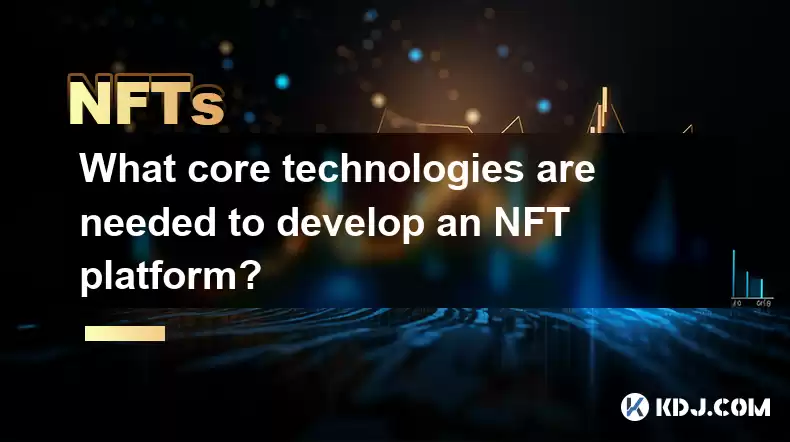-
 Bitcoin
Bitcoin $118300
-0.58% -
 Ethereum
Ethereum $3825
0.11% -
 XRP
XRP $3.137
-0.71% -
 Tether USDt
Tether USDt $0.9999
-0.01% -
 BNB
BNB $803.9
-3.37% -
 Solana
Solana $181.5
-1.94% -
 USDC
USDC $0.9999
0.01% -
 Dogecoin
Dogecoin $0.2238
-2.51% -
 TRON
TRON $0.3358
2.12% -
 Cardano
Cardano $0.7844
-2.16% -
 Hyperliquid
Hyperliquid $43.31
-1.48% -
 Sui
Sui $3.807
-4.04% -
 Stellar
Stellar $0.4203
-1.96% -
 Chainlink
Chainlink $17.79
-3.00% -
 Bitcoin Cash
Bitcoin Cash $567.8
-1.34% -
 Hedera
Hedera $0.2614
-4.30% -
 Avalanche
Avalanche $24.19
-4.46% -
 Litecoin
Litecoin $109.2
-0.74% -
 UNUS SED LEO
UNUS SED LEO $8.969
-0.01% -
 Toncoin
Toncoin $3.404
3.97% -
 Ethena USDe
Ethena USDe $1.001
-0.01% -
 Shiba Inu
Shiba Inu $0.00001307
-3.19% -
 Uniswap
Uniswap $10.33
-1.23% -
 Polkadot
Polkadot $3.884
-4.06% -
 Monero
Monero $312.9
-1.87% -
 Dai
Dai $1.000
0.01% -
 Bitget Token
Bitget Token $4.537
-2.24% -
 Pepe
Pepe $0.00001156
-3.40% -
 Cronos
Cronos $0.1437
-0.89% -
 Aave
Aave $282.8
-2.77%
What core technologies are needed to develop an NFT platform?
Building a robust NFT platform requires expertise in blockchain, smart contracts, UI/UX design, backend/frontend development, wallet integration, and secure metadata storage.
Apr 18, 2025 at 02:29 am

Developing an NFT (Non-Fungible Token) platform requires a deep understanding of several core technologies. These technologies span various domains including blockchain, smart contracts, and user interface design. Here, we will explore the essential technologies needed to build a robust and user-friendly NFT platform.
Blockchain Technology
Blockchain is the foundational technology behind NFTs. It is a decentralized ledger that records all transactions across a network of computers. For an NFT platform, choosing the right blockchain is crucial. Ethereum is the most popular blockchain for NFTs due to its support for smart contracts, but other blockchains like Binance Smart Chain, Flow, and Solana are also gaining traction.
When selecting a blockchain, consider factors such as transaction speed, fees, and the developer community's support. Each blockchain has its strengths and weaknesses, and the choice depends on the specific needs of your NFT platform.
Smart Contracts
Smart contracts are self-executing contracts with the terms of the agreement directly written into code. They automate the process of buying, selling, and transferring NFTs. Ethereum's Solidity is the most commonly used language for writing smart contracts, but other languages like Vyper and Rust are also used on different blockchains.
Developing smart contracts requires a thorough understanding of the blockchain's programming language and the ability to write secure and efficient code. It's essential to audit smart contracts to prevent vulnerabilities that could be exploited by malicious actors.
NFT Standards
Understanding and implementing NFT standards is crucial for interoperability and compatibility with existing platforms. The most common NFT standard is ERC-721 on Ethereum, which defines a set of rules for NFTs. There's also ERC-1155, which allows for both fungible and non-fungible tokens in a single contract, offering more flexibility.
Other blockchains have their own standards, such as Flow's Fungible Token Standard (FTS) and Non-Fungible Token Standard (NFTS). Adhering to these standards ensures that your NFTs can be easily traded on various marketplaces and integrated with other platforms.
User Interface and Experience
A user-friendly user interface (UI) and user experience (UX) are vital for the success of an NFT platform. Users should be able to easily create, buy, and sell NFTs without needing deep technical knowledge.
To achieve this, consider the following:
- Design: Create an intuitive and visually appealing interface that guides users through the process of interacting with NFTs.
- Accessibility: Ensure that the platform is accessible on various devices, including desktops, tablets, and smartphones.
- Integration: Integrate with popular wallets like MetaMask, Trust Wallet, or Coinbase Wallet to simplify the process of connecting to the blockchain.
Backend Development
Backend development is essential for managing the platform's logic, user data, and interactions with the blockchain. The backend should handle tasks such as user authentication, transaction processing, and data storage.
Key components of the backend include:
- APIs: Develop robust APIs to facilitate communication between the frontend and the blockchain.
- Databases: Use databases to store user data, transaction history, and metadata associated with NFTs.
- Security: Implement security measures to protect user data and prevent unauthorized access.
Frontend Development
Frontend development focuses on the part of the platform that users interact with directly. It involves creating the visual elements and ensuring that they function smoothly.
Key considerations for frontend development include:
- Frameworks: Use popular frameworks like React, Vue.js, or Angular to build responsive and interactive interfaces.
- Performance: Optimize the frontend for fast loading times and smooth performance, especially important when dealing with blockchain transactions.
- Testing: Conduct thorough testing to ensure that all features work as expected across different browsers and devices.
Wallet Integration
Wallet integration is critical for allowing users to interact with the blockchain. Users need to connect their wallets to the platform to sign transactions and manage their NFTs.
Steps for integrating wallets include:
- Choosing a Wallet: Select a wallet that is compatible with your chosen blockchain. For Ethereum, MetaMask is a popular choice.
- Connecting the Wallet: Implement a button or link that allows users to connect their wallet to the platform. This typically involves using the wallet's API to request user permissions.
- Handling Transactions: Develop code to handle transactions, such as minting new NFTs, transferring NFTs, and processing payments.
Metadata and Storage
Metadata and storage are essential for storing information about NFTs. Metadata includes details like the NFT's name, description, and image, which are typically stored off-chain to reduce costs.
Consider the following for metadata and storage:
- IPFS (InterPlanetary File System): Use decentralized storage solutions like IPFS to store NFT metadata. This ensures that the data remains accessible and tamper-proof.
- Centralized Storage: Alternatively, use centralized storage solutions like AWS S3, but be aware of the risks associated with centralized control.
- Metadata Standards: Follow standards like the ERC-721 Metadata JSON Schema to ensure compatibility with other platforms and marketplaces.
Security Measures
Security measures are paramount in protecting both the platform and its users. This includes securing the smart contracts, the backend, and the frontend.
Key security practices include:
- Smart Contract Audits: Regularly audit smart contracts to identify and fix vulnerabilities.
- Secure Backend: Implement secure coding practices and use encryption to protect user data.
- Frontend Security: Use techniques like Content Security Policy (CSP) and Cross-Site Scripting (XSS) protection to secure the frontend.
Testing and Deployment
Testing and deployment are crucial steps in ensuring the platform's reliability and performance. Comprehensive testing helps identify and fix issues before the platform goes live.
Steps for testing and deployment include:
- Unit Testing: Test individual components of the platform to ensure they work as expected.
- Integration Testing: Test how different parts of the platform work together.
- User Acceptance Testing (UAT): Have real users test the platform to ensure it meets their needs.
- Deployment: Use continuous integration and continuous deployment (CI/CD) pipelines to automate the deployment process and ensure smooth updates.
Frequently Asked Questions
Q: What are the main differences between ERC-721 and ERC-1155 standards?
A: ERC-721 is specifically designed for non-fungible tokens, where each token is unique and cannot be exchanged on a one-to-one basis. ERC-1155, on the other hand, is a multi-token standard that allows for both fungible and non-fungible tokens within the same contract, providing more flexibility and efficiency in managing different types of tokens.
Q: How can I ensure the security of my NFT platform's smart contracts?
A: Ensuring the security of smart contracts involves several steps. First, write secure code by following best practices and using established libraries. Second, conduct regular audits by reputable firms to identify and fix vulnerabilities. Finally, consider implementing additional security measures like time-locks and multi-signature wallets to enhance protection.
Q: What are the benefits of using IPFS for storing NFT metadata?
A: Using IPFS for storing NFT metadata offers several benefits. It provides decentralized and tamper-proof storage, ensuring that the metadata remains accessible and unchanged. Additionally, IPFS can reduce costs compared to on-chain storage and improve the platform's performance by offloading data storage from the blockchain.
Q: How important is user experience in the success of an NFT platform?
A: User experience is crucial for the success of an NFT platform. A well-designed and intuitive interface can attract and retain users, making it easier for them to create, buy, and sell NFTs. Poor user experience can lead to frustration and abandonment, so investing in UX design is essential for long-term success.
Disclaimer:info@kdj.com
The information provided is not trading advice. kdj.com does not assume any responsibility for any investments made based on the information provided in this article. Cryptocurrencies are highly volatile and it is highly recommended that you invest with caution after thorough research!
If you believe that the content used on this website infringes your copyright, please contact us immediately (info@kdj.com) and we will delete it promptly.
- Ozak AI Presale: Your Chance to Turn 1 ETH into 20? A Crypto Investment Deep Dive
- 2025-07-30 15:50:12
- IPO, Bitcoin, and Treasury: A New Era of Crypto Investment?
- 2025-07-30 14:30:12
- Bitcoin, Binance, and Whales: Decoding the Latest Market Moves
- 2025-07-30 14:50:12
- Bitcoin, Binance, and Whales: Decoding the $1.2B Shuffle
- 2025-07-30 16:10:12
- MultiBank Group's $MBG Token: Bridging TradFi and Web3 with LBank Listing
- 2025-07-30 16:10:12
- NFTs: Punks, Penguins, and the Market's Mosh Pit
- 2025-07-30 16:16:00
Related knowledge

Is it possible to get a refund on an NFT?
Jul 21,2025 at 08:35pm
Understanding NFT Transactions and RefundsWhen you purchase an NFT (Non-Fungible Token), the transaction is typically recorded on a blockchain, making...

What happens to NFTs when the owner dies?
Jul 22,2025 at 02:43pm
Legal Ownership and Digital AssetsWhen an individual owns NFTs, the question of what happens to these assets upon their death is a pressing one. NFTs ...

What are the tax implications of gifting an NFT?
Jul 19,2025 at 04:21am
Understanding the Basics of NFT GiftingGifting a Non-Fungible Token (NFT) involves transferring ownership from one individual to another without recei...

Can you trade NFTs on your phone?
Jul 18,2025 at 04:29am
Trading NFTs on Mobile DevicesYes, you can trade NFTs on your phone, and the process has become increasingly streamlined thanks to a variety of mobile...

How to find out about upcoming NFT mints?
Jul 18,2025 at 11:50am
Exploring NFT Minting OpportunitiesUnderstanding the landscape of upcoming NFT mints is crucial for collectors, investors, and creators who wish to st...

What is an allowlist or whitelist for an NFT mint?
Jul 20,2025 at 07:14pm
Understanding the Concept of an Allowlist for NFT MintingAn allowlist, also commonly referred to as a whitelist, is a mechanism used in the NFT mintin...

Is it possible to get a refund on an NFT?
Jul 21,2025 at 08:35pm
Understanding NFT Transactions and RefundsWhen you purchase an NFT (Non-Fungible Token), the transaction is typically recorded on a blockchain, making...

What happens to NFTs when the owner dies?
Jul 22,2025 at 02:43pm
Legal Ownership and Digital AssetsWhen an individual owns NFTs, the question of what happens to these assets upon their death is a pressing one. NFTs ...

What are the tax implications of gifting an NFT?
Jul 19,2025 at 04:21am
Understanding the Basics of NFT GiftingGifting a Non-Fungible Token (NFT) involves transferring ownership from one individual to another without recei...

Can you trade NFTs on your phone?
Jul 18,2025 at 04:29am
Trading NFTs on Mobile DevicesYes, you can trade NFTs on your phone, and the process has become increasingly streamlined thanks to a variety of mobile...

How to find out about upcoming NFT mints?
Jul 18,2025 at 11:50am
Exploring NFT Minting OpportunitiesUnderstanding the landscape of upcoming NFT mints is crucial for collectors, investors, and creators who wish to st...

What is an allowlist or whitelist for an NFT mint?
Jul 20,2025 at 07:14pm
Understanding the Concept of an Allowlist for NFT MintingAn allowlist, also commonly referred to as a whitelist, is a mechanism used in the NFT mintin...
See all articles

























































































